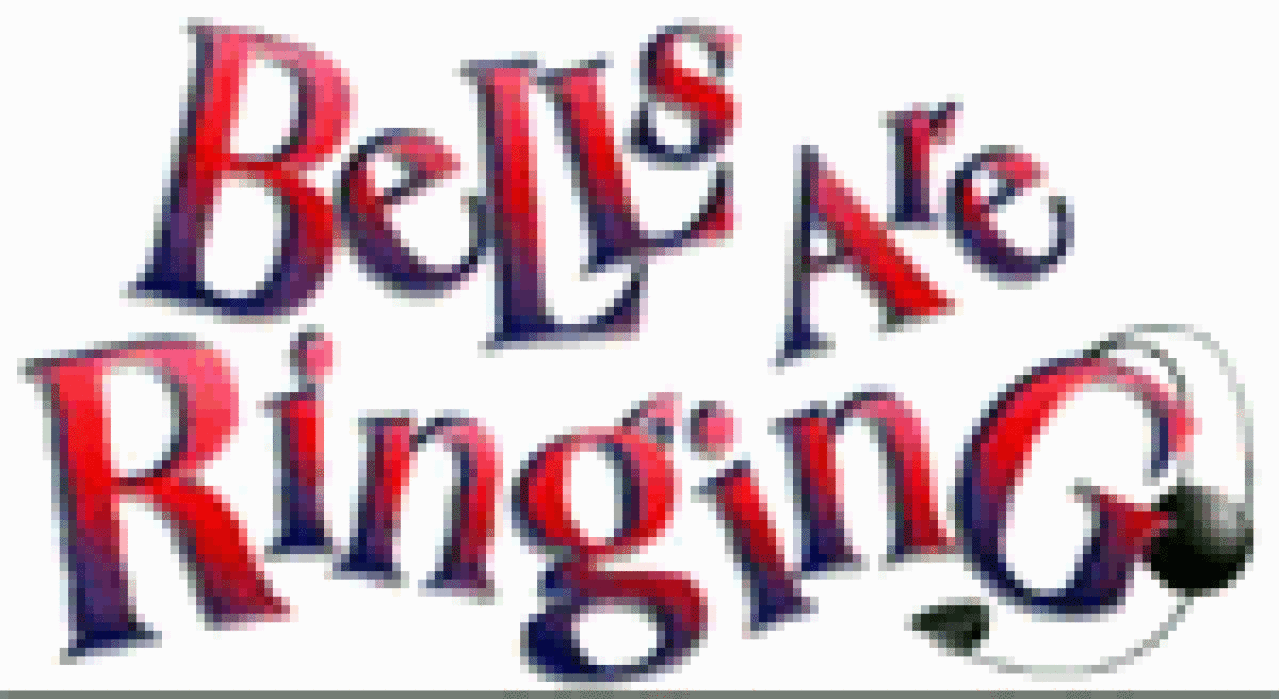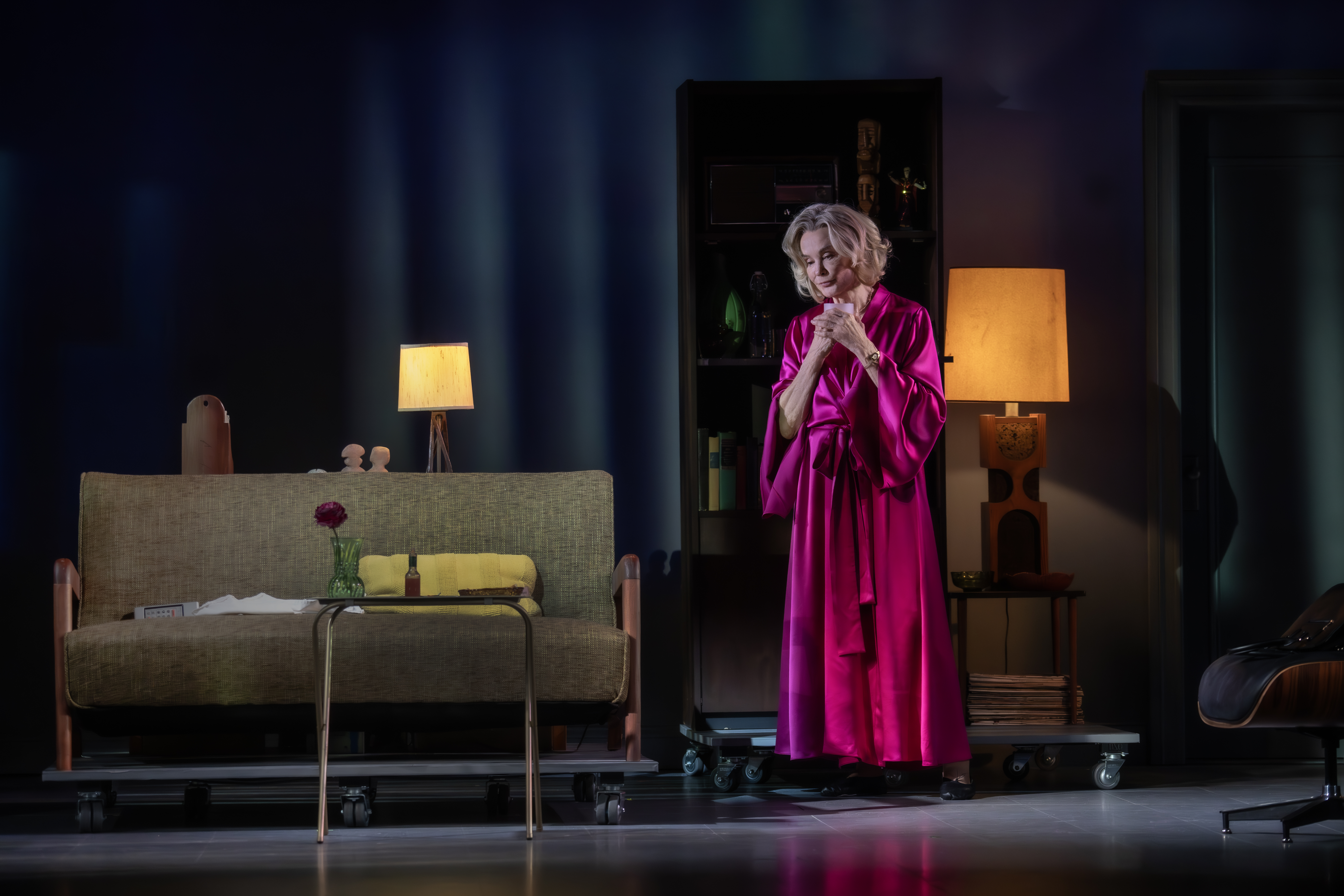Ring Them Bells!

promotional art for Bells Are Ringing
“I’ve always felt as if this show was for me,” says Faith Prince, “ever since I first listened to the cast album 25 years ago. I thought, ‘I know who this person is.’ And the show embodies everything that I feel I have to give to the musical theater: comedy, vulnerability, the arc of a character, along with the singing and dancing. So I wasn’t hesitant to take on the role. Not an inch!”
Prince is talking about the part of Ella Peterson in the first Broadway revival of the 1956 musical Bells Are Ringing, and her enthusiasm is infectious. This is a performer who needs no introduction to theater fans: She won a Tony Award for her portrayal of the perpetually engaged Miss Adelaide in the smash-hit revival of Guys and Dolls, garnering reviews that couldn’t have been more ecstatic if her mother had written them. Prince has since returned to the Main Stem opposite Martin Short in the Roundabout Theatre’s Little Me and as a replacement star in The King and I and James Joyce’s The Dead, but not since Adelaide has she had such a high-profile assignment as Ella.
Given its pedigree, Bells Are Ringing sounded like a winner from the start. Composer Jule Styne was, quite simply, one of the greatest Broadway tunesmiths of his era. Lyricists/librettists Betty Comden and Adolph Green had already been acclaimed for their work with Leonard Bernstein on two quintessentially “New York” musicals, On the Town and Wonderful Town–not to mention their screenplay for the all-time classic MGM movie Singin’ in the Rain–when they decided to write a show for their old friend and colleague Judy Holliday, with whom they had spent their salad days as performers in a nightclub act at the Village Vanguard called “The Revuers.”
By the mid-1950s, Comden notes, “Judy had become an Academy Award-winning movie actress and a terrific stage actress; she was tremendous in Born Yesterday. We wanted to write a show for her but we had no idea what to do. One day, we looked at the back of the phone book in Adolph’s apartment and we saw an ad for an answering service.” As Green recalls with a grin, “We thought that these services must be housed in huge, beautiful, stainless steel office buildings. But then we looked up the address of my answering service and we realized it was a block and a half away from where I lived. So we walked over and we found an old, four-story brownstone with steps going down to the cellar. That’s where the answering service was!” In Dickensian detail, Comden describes the place as “a messy, crowded room with filled-up wastebaskets and a dog peeing in the corner. In the middle of the room, at one switchboard, was a messy-looking girl who plugged into the board and said, ‘Gloria Vanderbilt’s residence.’ And we thought, ‘There’s an idea for a show.’ ”
The musical they crafted presents yet another Comden and Green dream vision of a New York City where strangers greet each other in song on the subway. But if some of Bells‘ scenes would seem to portray life on another planet, director Tina Landau chooses to stress the timelessness of the show’s themes, pointing out that “The story has striking parallels with the cyberculture of today. It’s about a woman who sits in front of an answering service switchboard. That’s how she experiences the world: She develops a series of intimate relationships, but she hides behind the technology. It’s become clear to me how relevant that is in the days of e-mail and the internet. The piece is almost mythic in structure, a Cinderella story. Ella eventually meets her Prince Charming and gets to go to the ball with him, but she’s afraid to reveal herself. She fears that she’s not good enough for her prince, Jeff Moss. In her world, New York in 1956, there’s a ‘right way’ to be a woman–a certain way to act, look, and dress–and she’s a non-conformist.”

As far as producer Mitchell Maxwell is concerned, “Bells Are Ringing is one of the last, great, unrevived musicals.” Asked to explain the show’s 45-year absence from Broadway, Maxwell ventures that “there may have been difficulty in finding a person to create her own version of Ella Peterson in the shadow of Judy Holliday. I think Faith Prince is one of the few people in the world who could deliver that.”
Were Comden and Green at all skittish about a Holliday-free production of Bells? “Well,” says Comden, “after the show closed in New York, it went on the road without Judy. And then it was done all over in stock and amateur theater by a million girls we never met. So a lot of people have played it. For a few years, I think, it was the biggest show in stock. We saw Tina Landau’s concert production in Washington [with Faith Prince, presented as part of the discontinued “Words and Music” series at the Kennedy Center], and it was excellent. That’s why we felt very confident about this revival.” As to the other question mark hovering over the show, Green says succinctly: “We’ll find out if it’s in any way dated–but I don’t think it is. We’ve kept the show in its original period of the 1950s, which is when we wrote it, and it should be kept there. But I think it has a contemporary feeling.”
The visual aesthetic of the production will also help to offer a fresh perspective on the piece. According to Maxwell, “The sets have been designed by Riccardo Hernandez along the lines of ‘fabulous minimalism,’ which was a design concept of the 1950s. They’re spare, but they’re vibrant, and the show moves with the fluidity of theater technology of this century. Also, Tina has created a situation in which the show is about the haves and the have-nots–the people who live on Park Avenue and the people who live in basement apartments. We have a floating skyline so that, when we’re in Jeff’s apartment, we’re looking down on New York City; when we’re among the have-nots, we’re looking up at the fire escapes and the buildings.”
The production’s ace-in-the-hole is Marc Kudisch in the role of Jeff Moss, a blocked playwright saved from a life spent “comfortably face-down in the gutter” by the love-struck Ella Peterson. “This is a great show with a great book,” Kudisch beams. “It really stands on its own, but you need to have a good Ella–and I think you also need to have a good Jeffrey. That’s true with every musical; if you don’t have a good central couple, it doesn’t work. Chemistry, to me, is something as simple as people who are connected. If you don’t have a good Ella, you’re lost, because she’s the heart of the show. But if you don’t have a good Jeff, then it makes Ella look stupid to be enraptured with this guy. Bells Are Ringing is a really romantic show, mostly because of the journey these people take. Ella and Jeff become better people because of each other. That’s romantic!”

In just a few years’ time, Kudisch has been featured in Broadway musicals of almost every conceivable stripe. “This is unlike any other show I’ve done before,” he says of Bells, “but that’s true of everything I’ve been involved with. High Society was different from Beauty and the Beast, which was different from The Scarlet Pimpernel, which was different from The Wild Party. What’s great about Bells Are Ringing is the story and the characters. Faith and I have some incredible scenes together.”
And then there’s the score, which embraces such standards as “Just in Time” (a monster hit for both Tony Bennett and Judy Garland), “The Party’s Over” (covered by scores of great singers), and the less well known but wonderfully touching “Long Before I Knew You.” Though modesty surely prevented Kudisch from saying so, he and his leading lady are more technically equipped to handle these songs than were the leads of the 1956 production. Back then, Jeff Moss was played by Sydney Chaplin (son of Charlie), whose good looks and charisma apparently got him through such shows as Bells and Funny Girl but whose abilities as a singer can most charitably be described as “limited.” And while Holliday’s renditions of the Bells songs on the original cast album will probably never be surpassed in terms of charm, humor, and pathos, the voice itself is only adequate. What with Prince’s bright, strong belt tones and Kudisch’s drop-dead-gorgeous baritone–not to mention Don Sebesky’s excellent new orchestrations and the presence in the cast of such other fine singers as David Garrison and Beth Fowler–the revival promises to be an aural delight.
The Bells revival might be thought of as the latest example of a musical comedy renaissance further marked by such new shows as The Full Monty and The Producers. “Well, you know, musical comedy is our heritage,” says Prince. “There are very few things that we as Americans can say we do better than anybody else. Jazz is one of them, and musical theater is another. We should honor that history. Nobody ever says, ‘Oh no, they’re doing La Bohème again!’ It really can be life changing to see a musical when it’s done extremely well.”
As Bells Are Ringing begins previews at the Plymouth Theater preparatory to its official opening on April 12, company morale is high. “We were just talking about how much we love being with each other,” Prince enthuses. “This is exactly why I went into this business, but it doesn’t happen too often.”











